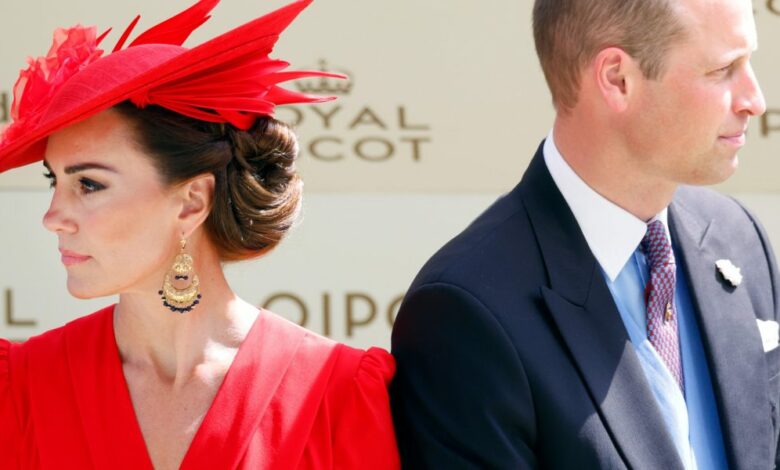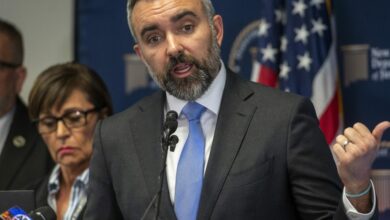British royal family’s longtime mantra ‘never complain, never explain’ is backfiring with the Kate Middleton debacle


The British royal family’s longtime approach to the public can be summed up as, “never complain, never explain.” Over centuries, this public relations strategy has generally served them well, maintaining the royals’ prim and proper appearance and general goodwill among the public. But as questions and conspiracy theories about Kate Middleton pile up, the strategy of silence is now backfiring, and observers around the world have started to make up their own narratives about the Princess of Wales’ health and whereabouts.
With Kate out of the spotlight and Kensington Palace refusing to comment on the authenticity or recency of photos of the princess that have appeared in the press, distrust in the royal family has grown.The lack of an official narrative has left room for onlookers to craft their own theories about what’s going on behind closed doors—going against many of the golden rules of PR and communications strategy, experts say.
“The royal family’s motto is the one thing working against them right now,” Beth Booker, founder and publicist at Gracie PR, tells Fortune. “Never complain and never explain—it only works when your audience trusts you. Right now, trust in the royal family is nearly nonexistent. Without trust in the institution itself, in members of the royal family, and in the royal family as a whole, and as long as that remains to be true, that approach will continue to backfire on them.”
Back up—what’s going on with Kate Middleton?
In mid-January, Kensington Palace released a statement saying that the Princess of Wales would be off from royal duties until Easter (the last weekend of March) for “planned abdominal surgery.” But conspiracy theories started flooding the internet in the following weeks as online observers started to question the legitimacy of Kate’s leave.
Then, tabloids and other media outlets released a photo of Kate out-and-about in the car with her mother, Carole Middleton, to make it appear as if she was in good health. But online followers quickly pointed out inconsistencies and argued that the photo wasn’t actually of Kate.
The big event that got many folks on the #KateGate train was when Kensington Palace released a photo of Kate and her three children (Prince George, 10; Princess Charlotte, 8; and Prince Louis, 5) for U.K. Mother’s Day on March 10. Major media outlets picked up the photo, including the Associated Press, which quickly took down the photo in an infamous “kill notification,” because the photo appeared to have been altered. The following day, Kensington Palace posted on X that Kate had Photoshopped the photo, but many online observers didn’t buy that.
More photos and videos of Kate surfaced after the Mother’s Day post. The Daily Mail released a photo of Kate and William in a car, but the photo was particularly blurry and showed only the back of Kate’s head, leading people to believe this photo had also been manipulated.
Earlier this week,The Sun released a video earlier this week of Kate and William leaving a market with a caption indicating the princess looked “relaxed and happy on a shopping trip with devoted hubby William.” Yet again, online observers questioned this video, arguing that the woman isn’t actually Kate. Outlets examining the metadata associated with the video have come up with opposite conclusions about the time it was created. Other outlets have also reported that Kensington Palace won’t confirm the legitimacy of the video, only fueling more speculation about what’s really going on with Kate.
The palace hasn’t “given the public enough proof to trust in them, leading to conspiracy theories and speculation around the globe,” Booker says. “They are letting the crisis they created grow in silence, which is the worst thing you can do.”
The problem with not addressing the public
To avoid addressing controversies and allegations goes against standard crisis PR and communications standards, Katya Varbanova, CEO of London-based brand marketing firm Viral Marketing Stars, tells Fortune. While it does go against the royal family’s “never complain, never explain” to address controversies, “there are exceptions to all rules,” she says.
“Whenever there are rumors that are unfounded and baseless, it makes sense to stay silent and ‘never explain,’” Varbanova says. But “whenever there are mistakes directly from the royal family [such as] doctored photos, it becomes an issue of trust and reliability, not of complaining or explaining rumors. What are they hiding?”
Other PR professionals see merit in the royal family’s motto, however. Samantha Jacobson, founder and CEO of TenXPR, says she agrees with their stance and that the palace is handling the situation correctly.
“You don’t have to always explain everything to the media,” she says. Some things “should be off-limits and have boundaries for anyone in the public eye. When you start explaining it leads to other questions and you have opened yourself up to public scrutiny and invasion of privacy.” She says their strategy also continues to build more interest in the family, and “at the end of the day, the royal family is a brand and they do have to keep the public interested in their every move.”
Either way, it’s still not too late to address the situation, Varbanova says. “When Kate Middleton is back, they could restore that trust with the right public statement that takes accountability and has a reasonable explanation,” she says. “But if they don’t address it at all, it can lead to permanent reputation damage and mistrust.”
Source link




